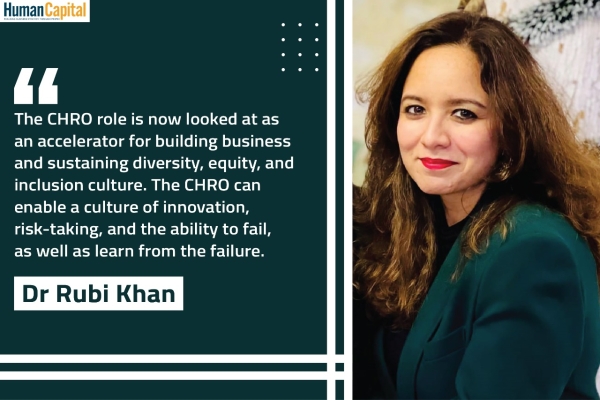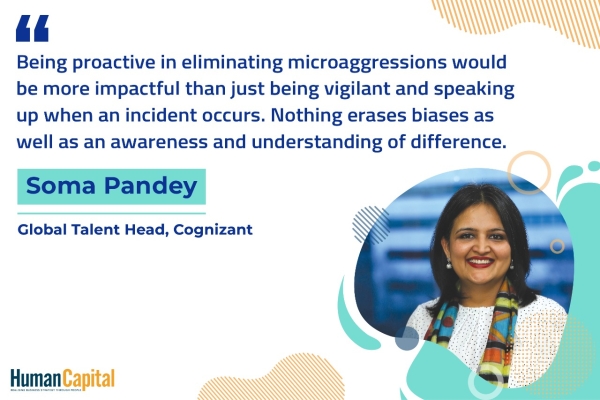The pandemic-driven crisis has posed a challenge never confronted previously by today's leaders. So unique and peculiar is the problem that the fundamental assumptions of businesses are being transformed.
Executives operating amid the COVID-19 pandemic are experiencing disruptions in every aspect of their daily lives. The morbid fear of contracting a potentially lethal illness apart, they are causing a variety of concerns such as forced isolation, social distancing, economic hardship, an unsettled feeling, helplessness, and hopelessness. And the response to the COVID-19 led crisis by the organisations’ leaders is a huge and delicate matter of concern. At such a crucial juncture, it becomes essential to explore the challenges before leaders and organisations and the quintessential positive leadership behaviours.
The Challenges
The pandemic-driven crisis has posed a challenge never confronted previously by today’s leaders. So unique and peculiar is the problem that the fundamental assumptions of businesses are being transformed since their very existence is under threat. It is therefore natural for leaders and managers to panic in such a situation. However, they need to distinguish between facts and opinions, and thereafter, shift their focus on facts alone to successfully navigate the COVID-19 times. Leaders need to be highly calibrated in their responses and identify key vulnerabilities and pressure points keeping the organisation’s survival in focus. Leaders focusing on organisational growth has now become an old paradigm. The missed leadership lesson is the setting up of a crisis response/management team in organisations. In-depth networking, gaining greater employer and consumer loyalty, and demonstrating trust among all the stakeholders are essential leadership competencies during this crisis.
They must hope for the best and prepare for the worst. Pessimism is counter-productive, and therefore, it is essential to deliberately inculcate an optimistic outlook. A heightened level of preparedness to accept the fact that businesses will not be as usual and will remain otherwise needs to be cultivated. They must look at this situation of crisis as a test of leadership and organisations must adopt newer technology and processes.
Putting competencies to test
Age-old leadership competencies such as vision, growth, and results orientation will no longer help. Strategising as an area of competence has also gotten questionable today since nobody could predict that such a crisis would unearth.
Leadership competencies to be demonstrated are entirely diverse and different during the COVID-19 crisis which are: -
(a) Being calm and quiet
(b) Retaining confidence and being hopeful
(c) Relentlessly communicating with employees
(d) Make employees comfortable
(e) Actively collaborating
(f) Reaching out to the community/ stakeholders
(g) Being compassionate
The suggested set of competencies may come closer to the model of resonance leadership proposed by Boyatzis & McKee (2005), wherein they have mentioned three components such as hope, compassion, and mindfulness. During this crisis, leaders must be convinced that: -
◆ They lead with mindful influence, not with authority
◆ They lead by participating and collaborating, not from a hierarchy
◆ They lead with purpose and higher calling, not with power
An incisive attention to culture
This is the time when leaders pay incisive attention to the culture more than ever. Culturally, there is a greater desire for socialisation among Indian employees, and as a result, it can lead to crowding. Crowding in public places and also in spaces within a workplace is a detriment for employees’ health, and hence, the practice of social distancing is a mandatory requirement. This is easier said than done. Organisational leaders must act and react as community leaders.
For many Indian organisations, the culture of Work From Home (WFH) poses many challenges. One such challenge is the attitude that WFH is a paid holiday, which is an incorrect assumption altogether.
Leaders need to trust managers, and managers, subject to the roles they play in organisations, have a huge onus in making WFH a reality. Learning programmes centred around the themes of WFH, social distancing, practising personal hygiene, handling psychological issues that are a fall out of WFH and the COVID19 crisis need to be planned for all employees across sectors, in view of the fact that COVID-19 does not differentiate between one sector and the other, or a prince and a pauper. Leaders need to be certain about what matters most when it comes to employees’ presence. Work From Home/ office/anywhere or productivity is a crucial question that must be answered along with the nature of job and roles that permit employees to WFH. As long as the metrics are in place, job roles that permit WFH can be a reality.
WFH has certain benefits as well. Employees can manage/ structure their time very well and in a meaningful manner. Managers cannot judge how often employees move away from their desk. There will be an increased focus on productivity and a decrease in micromanagement. New paradigms will emerge with reference to WFH in terms of managerial conversations, project deliverables, virtual colleagues, virtual lunches etc. Further, the advantage of WFH results in the possible reduction of toxicity of human interaction.
On 12th May 2020, Jack Dorsey, the CEO of Twitter, announced a new policy that employees can work from home indefinitely. Further, he stated, “if employees are in a role and situation that enables them to work from home and they want to continue to do so forever we will make that happen.” Facebook and Google also implemented a WFH policy. Policies may be drafted that outline the potential difficulties and tensions that come with WFH. Leaders are required to handle the mantle of redesigning effective workplaces and policies to meet with COVID-19 crisis.
Underscoring the predicament
In view of the above, there is a compelling case for executives of today’s organisations to underscore the predicament of the COVID-19 crisis and leaders across all functions and domains must keep the following pointers in mind:
◆ The COVID-19 pandemic has resulted in disruption and leaders of organisations need to practice positive behaviours.
◆ Leaders need to be highly calibrated in their responses and not panic in such times of crisis. Leaders must hope for the best and prepare for the worst. Organisations must adopt new technology, new process, and new policies as well.
◆ Being calm and quiet, retaining confidence and being hopeful, relentlessly communicating with employees, make employees comfortable, actively collaborating, reaching out to the community/ stakeholders, being compassionate are the key competencies of leadership during COVID-19 crisis.
◆ Information and knowledge related to COVID-19 and intentional behavioural change must be disseminated to all employees in the organisation by the leaders of learning and development. As a norm, all leaders in an organisation must undergo at least four webinars of mandatory learning programmes.
◆ There is no quick-fix solution to handle the crisis of COVID-19, and the older and conventional methods will certainly not work and new leadership behaviours are to be practised.
◆ Leaders during this crisis should lead with mindful influence, not with authority; lead by participating and collaborating, not from hierarchy; lead with purpose and higher calling, not with power.
◆ Leaders are required to handle the mantle of redesigning effective workplaces and policies to meet with COVID-19 crisis.
Are you comfortable working with dispersed colleagues?
Trending
-
SBI General Insurance Launches Digital Health Campaign
-
CredR Rolls Out 'Life Happens' Leave For Its Employees
-
Meesho Announces 30-Week Gender-Neutral Parental Leave Policy
-
Microsoft Unveils Tech Resilience Curriculum To Foster An Inclusive Future
-
60% Indian Professionals Looking For Job Change Due To COVID: Survey
-
SpringPeople And Siemens Collaborate For Digital Transformation Push
-
86% Professionals Believe Hybrid Work Is Essential For Work Life Balance: Report
-
Almost 1 In Every 3 People's Personal Life Affected Due To Work Stress
-
Meesho Rolls Out Reset And Recharge Policy For Employees
-
80% Of Talent Leaders & Academics Say Pandemic Changed Skill Needs For Youth: Report
-
Hero Electric Rolls Out 'Hero Care' Program For Employees
-
Human Capital In Collaboration With ASSOCHAM Hosts Virtual Conference
-
IKEA India, Tata STRIVE Collaborate To Create Employability And Entrepreneurship Opportunities
-
SAP India, Microsoft Launch Tech Skilling Program for Young Women
-
DXC Technology, NASSCOM Collaborate For Employability Skills Program
-
Lenskart To Hire Over 2000 Employees Across India By 2022
-
Mindtree Launches Learn-and-Earn Program
-
Tata AIA Extends 'Raksha Ka Teeka' To Its Employees
-
Swadesh Behera Is The New CPO Of Titan
-
NetConnect Global Plans To Recruit 5000 Tech Professionals In India
-
Hubhopper Plans To Hire 60% Of Indian Podcasters By 2022
-
Corporate India Needs More Women In Leadership Roles: Report
-
Aon to Invest $30 Million and Create 10,000 Apprenticeships by 2030
-
Tech Mahindra Launches ‘Gift a Career’ Initiative for Upskilling of Youth
-
40% Women Prefer Flexible Working Options in Post-COVID World: Survey
-
3 out of 4 companies believe they can effectively hire employees virtually: Report
-
Vodafone , CGI and NASSCOM Foundation launch digital skills platform
-
Odisha: Bank, postal employees to deliver cash for elderly, differently-abled persons
-
Skill India launches AI-based digital platform for "Skilled Workforce"
-
Hiring activity declines 6.73% in first quarter: Survey
-
70% startups impacted by COVID-19 pandemic
-
Bajaj Allianz Life ropes in Santanu Banerjee as CHRO
-
Over 70 Percent MSMEs look at cutting jobs to sustain businesses
-
93 Per Cent employees stressed about returning to office post-lockdown
-
Johnson & Johnson India announces family benefits for same gender partners
-
Indian firms turning friendly towards working mothers
-
Welspun India names Rajendra Mehta as new CHRO
-
Wipro partners with NASSCOM to launch Future Skills platform



Human Capital is niche media organisation for HR and Corporate. Our aim is to create an outstanding user experience for all our clients, readers, employers and employees through inspiring, industry-leading content pieces in the form of case studies, analysis, expert reports, authored articles and blogs. We cover topics such as talent acquisition, learning and development, diversity and inclusion, leadership, compensation, recruitment and many more.
Subscribe Now



.PNG)










































Comment